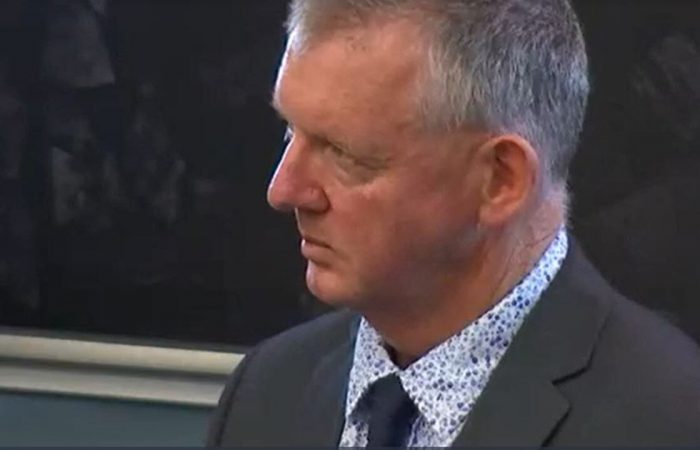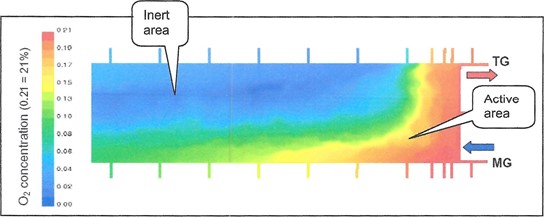![North Goonyella Mine Fire Class Action. “Romanski Took A Group Of Three Or Four People Into The Mine To Adjust The Position Of The Monitors. CW-7 Explained That Romanski Thought The Readings Were Inaccurate And A Result Of Incorrect Positioning Of The Equipment. One Of The Men That Entered The Mine Upon Exiting Told CW-7, “I Am Not [expletive] Going Back In There” And Made It Clear To CW-7 That He Would Refuse To Re-enter The Mine If Asked.](https://www.qldminingcrisis.com.au/wp-content/uploads/2021/03/incompetent-boss.jpg)
North Goonyella Mine Fire Class Action. “Romanski took a group of three or four people into the mine to adjust the position of the monitors. CW-7 explained that Romanski thought the readings were inaccurate and a result of incorrect positioning of the equipment. one of the men that entered the mine upon exiting told CW-7, “I am not [expletive] going back in there” and made it clear to CW-7 that he would refuse to re-enter the mine if asked.
66. CW-7 was employed as a Superintendent by Peabody at the North Goonyella mine from March 2018 to October 2018. During this time, CW-7 had responsibility for the nitrogen pumps that were tasked with reducing oxygen levels in the mine. Prior to his time with Peabody, CW-7 worked as a consultant for other major coal companies in Australia.
77. CW-7 also confirmed that North Goonyella was more susceptible to this type of event than other mines and that moving a longwall panel from one face to another often causes increased gas levels on the return side because actual mining processes have temporarily ceased.
78. CW-7 explained that Peabody monitored gas levels at North Goonyella in a number of ways. According to CW-7, one form of monitoring within the mine included twice daily MOP (Mine Operational Plan) meetings between all staff at the superintendent level and higher.
According to CW-7, the MOP meetings took place twice daily: (i) in the morning where they reviewed the previous 24 hours; and (ii) in the afternoon (prior to the beginning of the night shift) to discuss the next 24 hours.
CW-7 explained that in the MOP meetings, the group discussed what was meant to happen during those timeframes and then what did happen, including any specific events. CW-7 confirmed that during his tenure in 2018, John Anger (Director Safety Health Environment) and Marek Romanski (then Underground Mine Manager), or a representative on Romanski’s behalf, would attend the MOP meetings.
79. CW-7 confirmed that every event that occurs in the mine is recorded by the Mines Department.
80. According to CW-7, there is a separate, automated system in the mine called CITEC that also records gas levels, among other things. According to CW-7, the CITEC system is monitored 24 hours a day and seven days a week by a control room operator. CW-7 advised that in addition to the control room operator, there were also screens throughout the mine that displayed the CITEC readings, which could be observed by the entire workforce.
89. Further exacerbating personnel issues at the mine was the fact that remaining staff were long tenured and high paid, thus replacement personnel were typically hired on the cheap – and were mostly younger and inexperienced mine workers:
b) CW-7 confirmed that North Goonyella had a considerably older and longer-tenured staff than the other mines he worked at and he suggested that this may have contributed to the systems and processes which CW-7 described as “not the most up to date or efficient.”
113. CW-7 recalled that at the beginning of September 2018, when he returned to the mine from Brisbane, contractors had withdrawn from the mine and had adopted a “wait and see approach” about going back in.
114. CW-6 recalled that on September 3rd when he returned to the mine, SSE John Anger distributed duty cards which defined employees’ new roles as part of the Incident Management Team (“IMT”). CW-7 corroborated that after the evacuation, everyone received “duty cards” that described their new roles under these unique circumstances
116. CW-7 also discussed the formation of the IMT which included approximately ten individuals from various functions (mining, engineering, external parties, etc.) and explained that the IMT team meetings replaced the MOP meetings. IMT would meet twice a day and a team headed by the Health Safety T2021-03-19 – 0038 PEABODY ENERGY – AMENDED COMPLAINT (3023799.1) (1)raining Manager was responsible for recording the IMT discussions.
117. CW-7 recalled the introduction of morning briefings with the entire mine staff to discuss the North Goonyella situation
119. CW-7 confirmed that his superiors referred to the event as a “heating” and that mine employees pushed back on that notion as they were concerned about the situation being more serious than simply a “heating.”
131. CW-7 explained that gas levels in the mine fluctuated based on the time of the day. For example, around 4:00 PM local time, gas levels typically would go up as the barometer went down, but that would reverse in the morning.
CW-7 recalled that about 10 days into the period of elevated gas levels, CITEC still detected the ethylene, which was uncommon in mines.
CW-7 explained that this gas was more common at plants where timber was burning and signified to miners that there is trouble and certainly an “event” is occurring. According to CW7, the presence of ethylene was brought up by employees at the morning briefings and discussed at meetings of the critical incident team.
132. CW-7 recalled, in response to this concern, Romanski took a group of three or four people into the mine to adjust the position of the monitors. CW-7 explained that Romanski thought the readings were inaccurate and a result of incorrect positioning of the equipment.
According to CW-7, one of the men that entered the mine was an electrician, who upon exiting told CW-7, “I am not [expletive] going back in there” and made it clear to CW-7 that he would refuse to re-enter the mine if asked.
CW-7 described the electrician as looking “quite disturbed” and pointed out that this was very uncommon for people accustomed to being in mines. CW-7 advised that every member of the party carried handheld monitors and that afterwards that same electrician informed CW-7 that the environment in the mine was conducive to an explosion. CW-7 recalled that after the adjustment to the monitoring equipment, the ethylene was still recorded as present.
152. By September 22, 2018, Peabody observed haze coming out of the main fan shaft. An MRE from September 23, 2018 discussed the “acceleration of the spontaneous combustion event…”53 In fact, CW-7 referred to photos on his cellphone and confirmed that he had taken a picture of the first day that black smoke billowed out of the mine on September 22, 2018.
159. CW-7 recalled that while pumping nitrogen into the mine, workers noticed a “gray plume,” that became visible as it passed by the sun, while escaping a vent fan. CW-7 explained that anytime a miner pointed something out that that meant it was unusual, so he took this information to Romanski who dismissed it as “methane being pushed out of the mine.” CW7 noted that he was doubtful this information influenced any decisions going forward.


